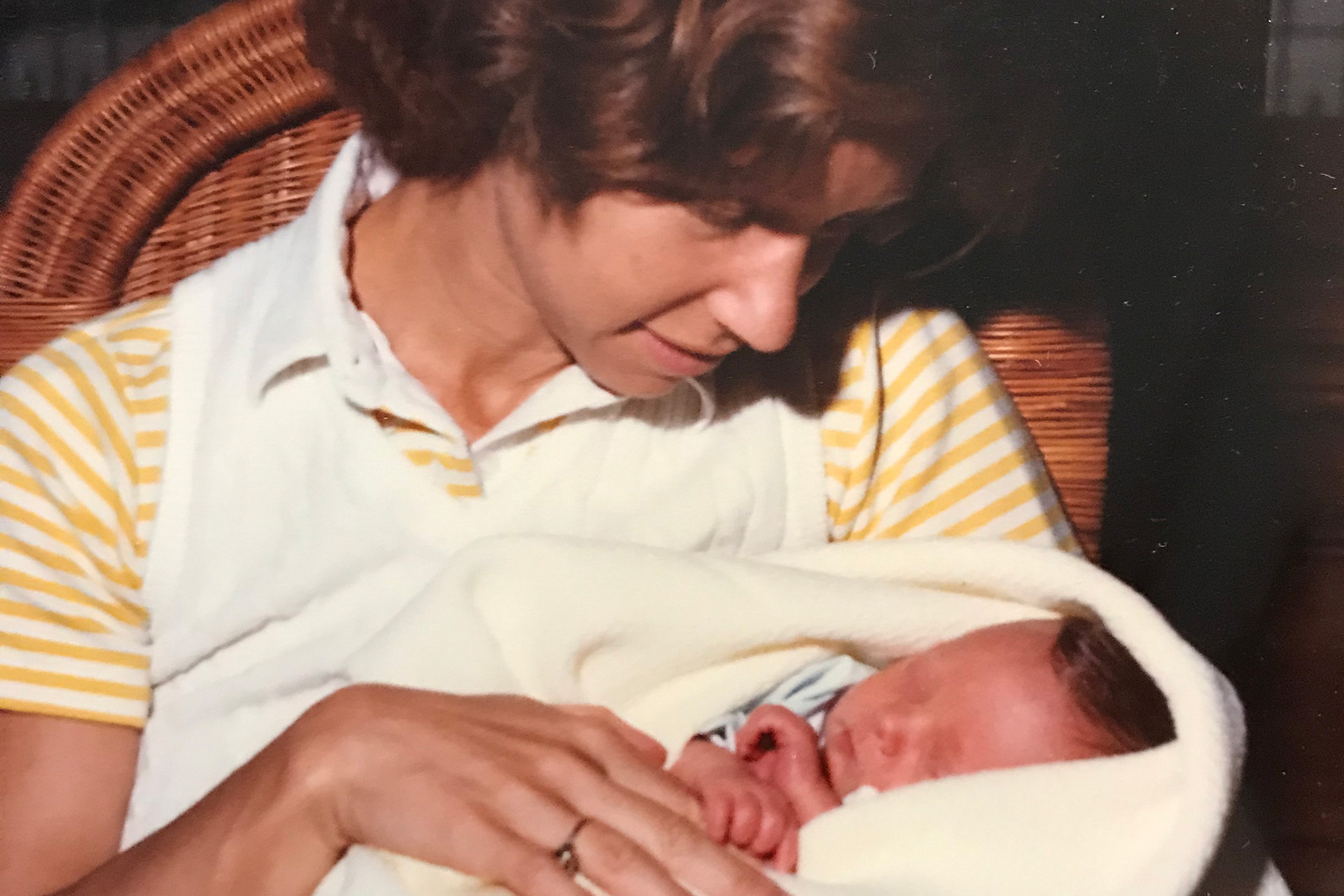Hand in Hand Parenting as a Trauma-Informed Caregiving Practice

Despite the growing recognition of the central role of toxic stress in childhood emotional and behavioral challenges, and mental and physical health across the lifespan, we are delighted to offer listening based tools for shedding emotional residue and building connection key to the best trauma-informed care.
Professionals within the fields of mental health, education, and healthcare have begun to recognize the profound short- and long-term impact of Adverse Childhood Experiences (ACEs) on human brain structure and function, physical and mental health, and behavioral functioning (Burke Harris, 2018).
A person’s history of ACEs is associated with risk for all of the leading causes of chronic morbidity and mortality in the United States (Felitti et. al., 1998). According to a technical report issued by the American Academy of Pediatrics (2012), the evidence on toxic stress suggests that many adult diseases should be viewed as developmental disorders that begin early in life and that persistent health disparities associated with poverty, discrimination, or maltreatment could be reduced by the alleviation of toxic stress in childhood. Some argue that the untreated effects of adversity in childhood are the greatest unrecognized public health emergency of our time (Burke Harris, 2014).
Moving from Toxic Stress to Recovery
Despite the growing recognition of the central role of toxic stress in childhood emotional and behavioral challenges, and mental and physical health across the lifespan, “…its treatment is still nascent – we are just beginning our response. If the global crisis of childhood adversity were a book, we would be in the second chapter…How do we move from having the first piece of the puzzle – knowing that adversity leads to a damaged stress response, which leads to toxic stress, which itself is the driver of a whole host of negative biological impacts and disease state – to the type of public health enlightenment that I had read about in grad school? For me, this frame shift is on the same scale as the medical community’s acceptance of germ theory…I believe that we are standing on the cusp of a new revolution, and it is every bit as consequential as the one sparked by Pasteur’s discovery of germs” (Burke Harris, 2018).
A Cross-Disciplinary Framework That Projects Positive Developmental Trajectories For Children Following ACES
Fortunately, we do have access to a cross-disciplinary framework that professionals in a wide variety of settings can use to design programs that buffer the effects of toxic stress and protect positive developmental trajectories for children following exposure to ACEs. Clinicians and researchers Margaret Blaustein and Kristine Kinniburgh developed a theoretical framework that outlines the essential components of trauma-informed care (Blaustein & Kinniburgh, 2010).
This empirically-supported framework, the Attachment, Regulation and Competency (ARC) Model, is grounded in attachment theory, child development, and research in traumatic stress. The ARC Model provides a rich theoretical framework that can guide programs as they develop supports and interventions for the children in their care. However, it was designed to be a theoretical structure rather than a compilation of specific treatment tools, so we are fortunate to have access to a set of trauma-informed caregiving practices that operationalize the components of the ARC model.
Hand in Hand offers a set of accessible tools that can be incorporated into families, school communities, and a range of therapeutic settings. The Hand in Hand Program is an attachment-based, emotion-focused, resiliency-building program that addresses all of the domains outlined in the ARC Framework using five concrete caregiving practices. These tools have been used by thousands of parents, educators, and mental health professionals over the last 30 years (www.handinhandparenting.org).
A Roadmap to Respond Through a Trauma-Informed Lens
Taken together, the ARC Framework and the Hand in Hand Program meet the core components of trauma-informed caregiving as identified by the National Child Traumatic Stress Network (NCTSN), and they give us a roadmap to organize our response to the critical public health issue of Adverse Childhood Experiences. Whether you are a parent, teacher, therapist, or medical doctor, we hope this article can help you see the emotions and behaviors of the children in your care through a new trauma-informed lens. We want to offer you a way to organize your thinking and program planning so that you can take an empirically supported approach in your caregiving, and we want to offer some concrete tools that you can bring to your practice, to your classroom, and to your families immediately, even in the context of limited resources.
Caregiving Tools That Operationalize the ARC Framework
The ARC Framework includes 10 ‘building blocks’ that are targeted for assessment and intervention after exposure to toxic stress to support development in three domains of functioning: Attachment, Self-Regulation, and Competency. The Hand in Hand Program operationalizes each domain through five concrete caregiving tools. These five tools include a structured one-on-one caregiver-child playtime to build connection (Special Time), an approach to foster co-regulation during emotional episodes (Staylistening), a play-based approach for building children’s confidence and competence (Playlistening), a strategy for handling challenging behavior (Setting Limits), and a peer-support format that provides a buffer against vicarious trauma for caregivers (Listening Partnerships) (Wipfler & Schore, 2016).
Attachment
The first domain addressed by the ARC Framework is Attachment. A secure caregiver-child relationship is the foundation for healthy development and children rely on the availability of an attentive, attuned caregiver to navigate the stressors they encounter (Gray et. al., 2015). The absence of this relationship, or the presence of a stressful caregiver-child relationship, are significant risk factors for emotional difficulties (Blaustein & Kinniburgh, 2010), and the single most important protective factor in the context of potentially traumatic stress is a strong caregiver-child relationship (Lezin, et. al., 2014).
The Attachment domain of ARC includes the building blocks needed for developing a secure caregiver-child relationship, and the Hand in Hand Program was identified as a caregiving program that directly strengthens this critical relationship (Lezin, et. al., 2014). The building blocks of attachment include management of affect for the caregiver, caregiver attunement, consistency of response, and the implementation of routines and rituals. Exposure to adversity in childhood can often result in emotional and behavioral dysregulation and an overly reactive stress response system. It can be quite challenging for a caregiver to manage their own emotional responses when caring for a child whose system was forged in the context of early adversity, and even more-so when that caregiver has their own history of trauma or toxic stress.
The Hand in Hand Program offers a format for caregivers to exchange peer support (Listening Partnerships) in a way that buffers those stresses, builds regulatory capacity in the caregivers, and allows them to be more responsive and attuned in their caregiving role (Oatis, et. al., 2014). Hand in Hand also offers a tool that supports caregivers in establishing connection rituals and routines that support them in attuning to the child and offering consistency of responses (Special Time).
Regulation
The second domain of ARC is Regulation. Traumatic stress impacts the physiological, emotional, behavioral, and cognitive regulatory systems of children (Blaustein & Kinniburgh, 2010). The ARC framework conceptualizes regulation as the ability to self-regulate internal experience. The building blocks for self-regulation in the ARC framework are the child’s ability to identify and understand their own and others internal states, to modulate optimum levels of arousal and increase the range of arousal, and to engage in effective verbal and nonverbal expression of affect (Blaustein & Kinniburgh, 2010).
The Hand in Hand Program explicitly fosters emotional expression and provides scaffolding for caregivers to attend to that expression (Staylistening). This kind of attuned anchoring during emotional moments allows children to increase their range of arousal and ultimately to modulate that arousal, initially through a co-regulatory process which is the foundation upon which self-regulatory capacities can be built. As children are developing these regulatory capacities, it may be necessary for caregivers to set limits on unsafe behaviors that can arise in these moments of heightened emotion. Hand in Hand’s Limit Setting tool allows caregivers to set warm, firm limits in a way that does not make use of the potentially triggering separation-based or punishment-based strategies that can undermine relationships.
Competency
The third domain of ARC is Competency, which involves the building of internal and external resources for healthy development. These resources can support social connections, community involvement, and academic engagement for the child, areas that can be challenging for children who have been exposed to early developmental trauma (Blaustein & Kinniburgh, 2010). Within ARC, the building blocks of competency are the development of age-appropriate executive functioning skills, particularly a sense of agency and decision-making skills, and the development of a positive sense of self (Blaustein & Kinniburgh, 2010).
The Hand in Hand Program offers a play-based tool for building a child’s sense of confidence and competence in the context of an attuned and connected relationship with a caregiver (Playlistening). In Playlistening the adult takes the less powerful role in play, so that the child gets to experience feeling stronger, faster, or smarter than the caregiver while not being in danger of truly being defeated in play. Often Playlistening involves physical play and roughhousing and this is an especially good antidote to the ways in which early physical adversity may have impacted a child’s sense of their own physical competence and their self-concept.
According to Bessel van der Kolk (2014), “The body is physically restricted when emotions are bound up inside. People’s shoulders tighten, their facial muscles tense. They spend enormous energy on holding back their tears – or any sound or movement that might betray their inner state. When physical tension is released, the feelings can be released.” The role-reversals inherent in Playlistening allow children to experience a sense of agency, to release this bound-up energy through laughter and play, and to return to a state of connection and regulation.
In our experience, children’s executive functioning skills are more readily accessible after having the opportunity to exercise and develop their decision-making skills during Special Time as they lead the adult in play, and to express emotion in the context of a safe and co-regulating caregiving relationship during Staylistening. Hand in Hand posits that the physiological release of emotions when being limbically anchored by a caring adult is a mechanism for healing.
This release of feelings supports the processing of explicit and implicit emotional memories. Physiological release may look like crying, tantruming, shaking, sweating, gross motor movements, laughing, yawning, or animated talking. Hand in Hand’s experience supports that after this kind of emotional expression, children are more relaxed, possess a greater ability to give and receive love, can play better, and can think and learn better (Wipfler & Schore, 2016). Peter Levine (2008) states that when children “discharge their residual traumatic energy,” this allows the body to “reduce accumulated stress while restoring optimal functioning.”
The process he describes allows for the development of resilience, confidence, and joy.
Multidisciplinary Collaboration is Essential
Helping children to heal from the effects of early adversity can be highly emotional work; robust support for caregivers is essential. Dr. Kavitha Selvaraj, a medical doctor at the Ann and Robert H. Lurie Children’s Hospital in Chicago, was formerly a teacher in a stressed environment and shared that, “As a seventh-grade biology and health teacher in an underserved neighborhood, [she] wanted to serve as a role model and inspiration. But in [her] first year as a teacher, [she] felt extremely underprepared to handle behavioral outbursts – including being punched in the face by a student – and felt like [she] spent little time teaching” Selvaraj wrote in the journal Pediatrics as reported Reuters in 2018. In a phone interview with Reuters, Dr. Selvaraj reflected that “I didn’t realize then what I know now – that there are so many different people who can help children with these stressors. As a teacher, I never dreamt of talking to a pediatrician. Why didn’t anyone tell me I didn’t have to do this alone?…Children with toxic stress have complex educational, behavioral and medical needs that can’t be handled by one industry or one person. Doctor-school collaborations have been successful for children with developmental disorders, ADHD, under-nutrition, obesity, food allergies and asthma. Toxic stress can be added to that list…we need a massive effort to get everyone on the same page. Partnerships won’t have power without parents, pediatricians and teachers involved. It’s a triad of support for our children” she said.
Conclusion
The Hand in Hand tools, situated within the theoretical framework of the ARC model, provide us with just such a unifying approach. Access to these intervention resources and further collaborations between parents, educators, medical professionals, and mental health providers are the next chapter in the story of ACEs. “When we understand that the source of so many of our society’s problems is exposure to childhood adversity, the solutions are as simple as reducing the dose of adversity for kids and enhancing the ability of caregivers to be buffers… Because when you know the mechanism, you can use that understanding in countless ways to drastically improve the human condition.
“That is how you spark a revolution.
“You shift the frame, you change the lens, and all at once the world is revealed, and nothing is the same” (Burke Harris, 2018).
Applying Hand in Hand Tools in Practice
Learn Hand in Hand’s five tools and apply them to guide your trauma-informed programming. Hand in Hand Professional’s Intensive is an 8-week intensive course for professionals working with children. During weekly calls with an instructor and small mentor groups you’ll get guidance on applying the tools in your setting, and the chance to review how they work. The course offers 20 CEUs. Find more and register here.
Meet The Instructors:
Maya Coleman, Instructor in Hand in Hand’s Professionals Intensives course
Maya Coleman is a PHD, Clinical Psychologist and Hand in Hand Instructor based in Washington, D.C. She currently leads one of Hand in Hand’s Professionals Intensives, as well as counselling families. She is happy to receive questions by e-mail. You can also visit her website.

Kristen Volk is a former Certified Hand In Hand Instructor.
References
Blaustein, M. & Kinniburgh, K. (2010). Treating traumatic stress in children and adolescents: How to foster resilience through attachment, self-regulation, and competency. New York, NY: The Guilford Press.
Burke Harris, N. (2014, Sept). How childhood trauma affects health across a lifetime [Video file]. https://www.ted.com/talks/nadine_burke_harris_how_childhood_trauma_affects_health_across_a_lifetime.
Burke Harris, N. (2018). The deepest well: Healing the long-term effects of childhood adversity. New York, NY: Houghton Mifflin Harcourt Publishing Company.
Felitti, VJ, et. al. (1998). Relationship of childhood abuse and household dysfunction to many of the leading causes of death in adults: The adverse childhood experiences (ACE) study. American Journal of Preventive Medicine, 14(4), 245-58.
Gray, SAO, Forbes, D, Briggs-Gowan MJ, & Carter AS. Caregiver insightfulness and young children’s violence exposure: Testing a relational model of risk and resilience. Attachment and Human Development, 17(6), 615-634.
Levine, P. (2008). Trauma-proofing your kids: A parents’ guide for instilling confidence, joy, and resilience. Berkeley, CA: North Atlantic Press.
Lezin, N., Rolleri, L., Bean, S. & Taylor, J. (2004). Parent-Child connectedness: Implications for research, interventions and positive impacts on adolescent health. Santa Cruz, CA: ETR Associates.
National Child Traumatic Stress Network (n.d.). National Child Traumatic Stress Network Empirically Supported Treatments and Promising Practices. http://www.nctsn.org/resources/topics/treatments-that-work/promising-practices#q3.
Oatis, P., Wipfler, P., Klorer, M., McKitrick, T., Canterbury, E., Roe, J., & Buderer, N. (2014). Listening based parenting strategies promote stronger parent-child connection. Research day poster presented at Mercy Children’s Hospital, Toledo, OH.
Shonkoff, J., Garner A., The Committee on Psychosocial Aspects of Child and Family Health, Committee on Early Childhood, Adoption, and Dependent Care, and Section on Developmental and Behavioral Pediatrics; Siegel, B., Dobbins, M., Earls, M. Garner, A, McGuinn, L, Pascoe, J., Wood, D. (2012). The lifelong effects of early childhood adversity and toxic stress. The American Academy of Pediatrics Technical Report. 129 (1) e232-246; DOI: 10.1542/peds.2011-2663.
Van der Kolk, B. (2014). The body keeps the score. New York, NY: Viking.
Wipfler, P., & Schore, T. (2016). Listen: Five simple tools to meet your everyday parenting challenges. Palo Alto, CA: Hand In Hand Parenting.
Reuters (2018, January 5). Doctors and teachers could team up to reduce stress in schools. https://arynews.tv/en/doctors-teachers-team-reduce-stress-schools/.
